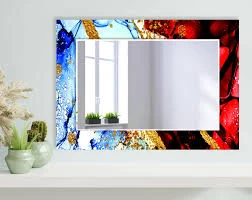

Understanding Reflective Glass A Comprehensive Overview
Reflective glass, often referred to as reflective glazing, is a type of glass that has a special coating designed to reflect light and heat. This innovative material has gained popularity in modern architecture and building design due to its aesthetic appeal, energy efficiency, and functional benefits. In this article, we will explore what reflective glass is, its types, applications, and advantages, along with some considerations when choosing and using it.
What is Reflective Glass?
Reflective glass is typically made by applying a thin layer of metallic coating to the surface of the glass. This coating allows the glass to reflect a significant portion of the solar radiation that hits it, reducing the amount of heat transfer into a building. While it is used mainly for windows, reflective glass can also be found in facades, skylights, and other architectural elements. The level of reflectivity can vary based on the type of coating and the intended use of the glass.
Types of Reflective Glass
There are several types of reflective glass, each designed for specific applications and aesthetic preferences
1. Low-Reflective Glass This type has a subtle coating that reduces glare while still allowing a decent amount of natural light to enter. It is ideal for residential settings where occupants desire brightness without the harshness of glare.
2. Medium-Reflective Glass This glass offers a balance between reflection and transparency. It is commonly used in commercial buildings where both outward visibility and energy efficiency are priorities.
3. High-Reflective Glass With a strong metallic coating, this type maximizes glare reduction and heat control. It is often used in high-rise buildings and skyscrapers where solar heat gain can cause significant cooling costs.
4. Tinted Reflective Glass This combines color with reflectivity, providing both aesthetic value and performance. It is beneficial in applications where aesthetics are as important as energy efficiency.
Applications

Reflective glass is widely used in various sectors, including
- Commercial Buildings Skyscrapers and office buildings utilize reflective glass for improved energy efficiency, comfort, and modern aesthetics. - Residential Properties Homeowners may choose reflective glass for windows to reduce heat gain and enhance privacy without sacrificing natural light. - Automotive Industry Car manufacturers use reflective glass in vehicle windows to improve passenger comfort and energy efficiency. - Interior Design Reflective glass is also used in decorative elements, such as mirrors, shelves, and partitions, enhancing the visual appeal of spaces.
Advantages of Reflective Glass
1. Energy Efficiency By reflecting solar radiation, reflective glass helps maintain a comfortable indoor climate, potentially reducing reliance on air conditioning and lowering energy bills.
2. Glare Reduction Reflective coatings minimize glare from direct sunlight, making spaces more comfortable for occupants.
3. Enhanced Privacy With higher reflectivity, reflective glass allows occupants to enjoy natural light while maintaining a level of privacy from the outside.
4. Aesthetic Appeal The sleek, modern look of reflective glass enhances the overall design of buildings, contributing to a contemporary architectural style.
5. UV Protection Many reflective glasses can block harmful UV rays, protecting interior furnishings from fading and degradation.
Considerations
While reflective glass offers many benefits, it also has some drawbacks. The degree of reflectivity may affect views and natural light penetration. Moreover, careful consideration is needed regarding the local climate, as excessively reflective glass in certain environments can lead to discomfort for those outside the building.
In conclusion, reflective glass is a versatile and valuable material in modern architecture. Its ability to improve energy efficiency, reduce glare, and provide privacy makes it an attractive option for a variety of applications. When used thoughtfully, reflective glass can enhance the functionality and aesthetics of both residential and commercial spaces. As the demand for sustainable design continues to grow, reflective glass will likely remain a popular choice in building projects across the globe.